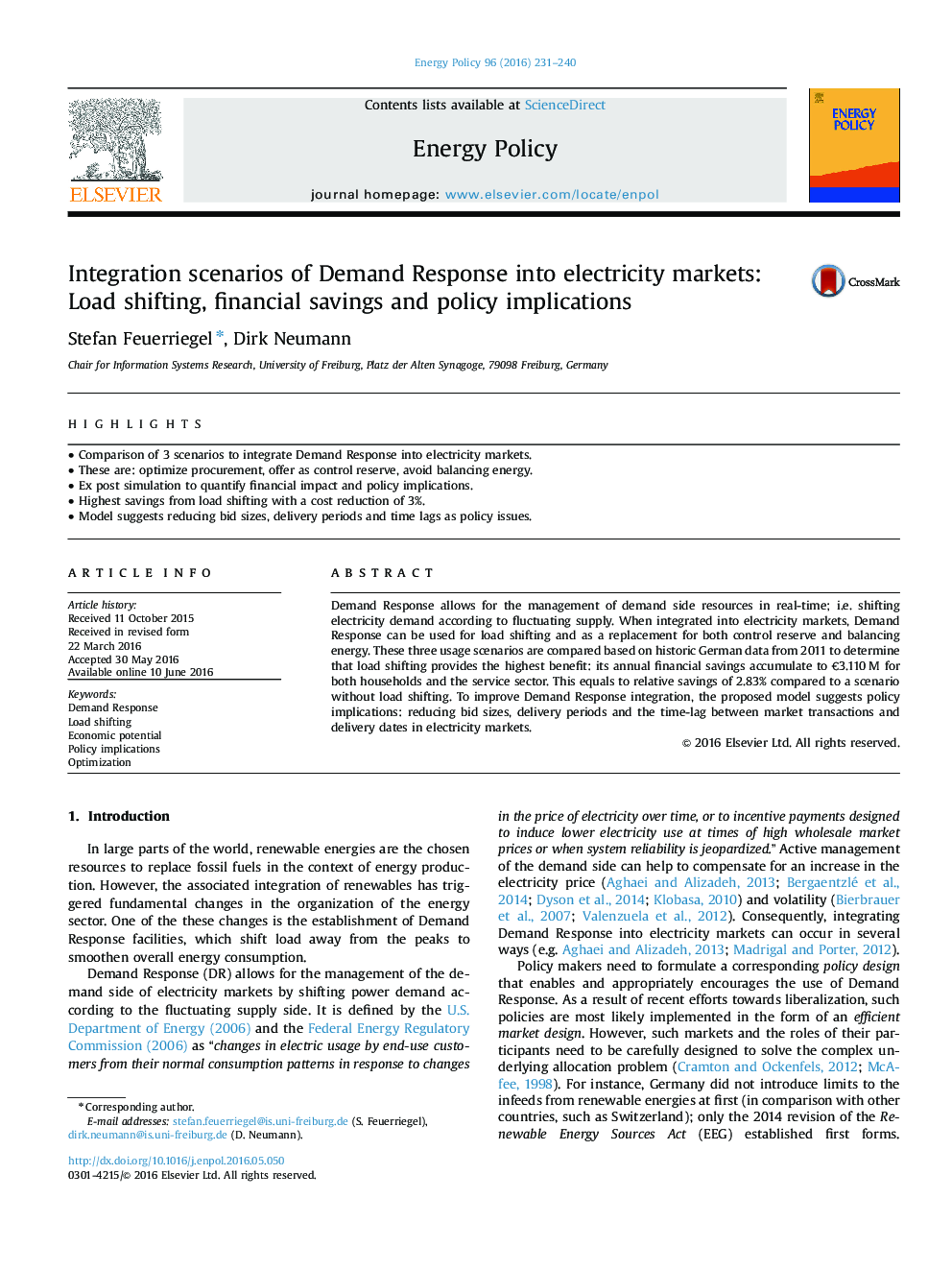| Article ID | Journal | Published Year | Pages | File Type |
|---|---|---|---|---|
| 7398731 | Energy Policy | 2016 | 10 Pages |
Abstract
Demand Response allows for the management of demand side resources in real-time; i.e. shifting electricity demand according to fluctuating supply. When integrated into electricity markets, Demand Response can be used for load shifting and as a replacement for both control reserve and balancing energy. These three usage scenarios are compared based on historic German data from 2011 to determine that load shifting provides the highest benefit: its annual financial savings accumulate to â¬3.110 M for both households and the service sector. This equals to relative savings of 2.83% compared to a scenario without load shifting. To improve Demand Response integration, the proposed model suggests policy implications: reducing bid sizes, delivery periods and the time-lag between market transactions and delivery dates in electricity markets.
Related Topics
Physical Sciences and Engineering
Energy
Energy Engineering and Power Technology
Authors
Stefan Feuerriegel, Dirk Neumann,
